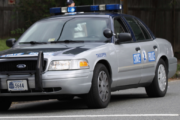Sleep invader
It’s estimated that as many as 24 million adults in the U.S. have obstructive sleep apnea, and for the majority who suffer from the most common form of sleep-disordered breathing, it goes undiagnosed.
Untreated, sleep apnea has been linked to high blood pressure, heart disease, stroke, memory loss, obesity, parasomnias (or involuntary behaviors like sleepwalking) and insulin resistance, a precursor to Type 2 diabetes. And research shows a link between severe sleep apnea, the repeated drops in blood oxygen levels and premature death.
The ensuing daytime sleepiness can also be a “public health hazard, if you happen to be an airline pilot or a 16-wheel truck driver who is sleeping at the wheel,” says Dr. Alex Chediak, a sleep medicine specialist and past president of the American Academy of Sleep Medicine.
Snore loudly? Feel exhausted despite a “good night’s rest?” It could be time to discuss symptoms with a doctor. You might be referred to a sleep specialist to undergo a complete sleep evaluation.
Treatment options may include a continuous positive airway pressure (CPAP) machine, which creates a column of air that keeps the airway open, an oral device or surgery.
Meantime, here’s what sleep doctors say can exacerbate obstructive sleep apnea or put people at risk for the nighttime breathing disorder:
Anatomy
With sleep apnea, throat muscles, which are usually tense while awake, relax during sleep, allowing the airway to collapse or become plugged by the tongue. As with a kinked hose, the flow stops, sometimes for 10 seconds or more.
As the brain senses distress, people may bolt upright and gasp for air, or they may simply snort and go back to sleep, experts say. This can go on hundreds of times a night, without the person realizing it.
For some people, an anatomic abnormality may be the culprit. Enlarged tonsils, a deviated septum or a smaller-than-normal airway are among them, says Dr. David Schulman, a sleep medicine specialist with Emory Healthcare in Atlanta.
COVID-19
Another condition that affects breathing — COVID-19 — doesn’t bode well for people with sleep apnea. They tend to have more severe infection, with increased intensive care unit transfers and increased need for intubation, according to a meta-analysis of evidence published May 13 in the journal CHEST Physician and co-authored by Dr. Ashima Sahni, an assistant professor of clinical medicine and associate program director of the sleep medicine fellowship at the University of Illinois at Chicago.
“COVID-19, which is caused by the SARS-CoV-2 virus, triggers an increased inflammatory response in the body,” Sahni says. “When your body is deprived of oxygen at nighttime, that in itself triggers an inflammatory response. So you can imagine that patients who have obstructive sleep apnea — especially when untreated — tend to have lower oxygen levels to begin with. And if they do contract COVID, we would think that these patients will have more severe COVID infection and will tend to have worse outcomes.”
Sahni’s recommendation for avoiding COVID-19 complications: “Vaccination and CPAP usage are super-important.”
CPAP and COVID-19
Sleep apnea patients who regularly use their CPAP may actually reduce their risk of COVID-19 infection. Patients with obstructive sleep apnea with the least use of CPAP therapy had a 2.1% risk of acquiring COVID-19 in a study using data from nearly 83,000 patients in Southern California.
However, for patients who were using CPAP at least four hours nightly, the risk of getting COVID-infection dropped to 1.3%, according to the study presented at the American Thoracic Society conference in May 2021.
While it’s difficult to prove cause-and-effect, Sahni notes, “As a sleep physician, and for the community at large, we do want to consider obstructive sleep apnea as a chronic medical condition that could be considered a risk factor for severe COVID infection.”
Because CPAP creates aerosol when used, there could be tiny particles suspended in the air for a longer time than otherwise, Sahni explains. Some of her patients have expressed fears that if they were infected by COVID-19, they could increase their family’s risk of exposure to the virus. The American Academy of Sleep Medicine offers patient information for those who have sleep apnea and are infected with COVID-19, including safe CPAP use.
Obesity
“The main factor that contributes to sleep apnea is obesity,” says Dr. Asha Singh, director of the Oregon Health & Science University Sleep Medicine Program in Portland. Although thin folks can develop apnea, more than 50% of people who have the condition are overweight, according to the National Heart, Lung, and Blood Institute.
Nearly 2 billion people worldwide have obesity, according to the World Health Organization, and almost 1 billion people worldwide are estimated to have sleep apnea, Sahni points out. “It’s a huge connection, and it’s underdiagnosed,” she says.
Here’s how the obesity-sleep apnea relationship works: “There is increased fat deposition around your neck area, which can make your upper airway and your windpipe area more vulnerable to collapse at nighttime,” Sahni explains. “And on the other side, you can have increased fat deposition around your abdomen, which can increase your abdominal girth.”
Eventually, she says, “That could reduce your lung volumes and impact the collapsibility of your upper airway. All these factors combine together to increase your risk of having obstructive sleep apnea.”
Weight gain
Frustratingly, sleep apnea may also contribute to weight gain. There is evidence to suggest that it may lead to an increase in appetite for unhealthful foods. For instance, a study in the January 2019 issue of the journal Sleep found that people with severe forms of the disorder were more likely to make poor food choices than those who were unaffected or had mild cases.
“If you have sleep apnea, there’s definitely increased sleep disruption,” Sahni says. “Studies have shown that increased sleep disruption leads to increase in a hormone in our body that is an appetite-stimulating hormone. And it reduces the appetite-suppressing hormone — and you end up having increased cravings for calorie-dense food.”
In addition, she says, “Patients with sleep apnea tend to be sleepier and more fatigued, which eventually will make you less physically active, which, again, can compound your risk of gaining weight. It’s a vicious cycle.”
If you’re obese and struggling with sleep apnea, weight loss is crucial. “In any way or form, weight-loss management will be essential,” Shani says. “If it is challenging, considering weight-loss surgery would be another alternative.”
Alcohol
“Alcohol increases muscle relaxation, and that’s true for the muscles of the throat — and actually the tongue muscle,” says Dr. Kathleen Yaremchuk, chair of otolaryngology and a sleep specialist at Henry Ford Health System in Detroit. This makes the airway more vulnerable to obstruction during sleep.
Though alcohol’s effect usually dissipates as it clears the body throughout the night, cutting down may help.
Medications
Prescription medications can also create a double whammy. “If you’re taking muscle relaxants, you’re going to expose yourself to greater snoring and sleep apnea,” Chediak says, and “the vast majority of sleeping medications have a muscle relaxant property.”
In addition, sleeping pills make it harder to arouse from sleep. A noise must be louder. A pain must be sharper. Likewise, an episode of sleep apnea must last longer because “more respiratory compromise” is needed to wake the brain up to restore normal breathing, he says.
Painkillers can also be problematic, experts say, particularly opioids, which cause respiratory suppression and add to breathing difficulties a person may face overnight.
Other medical conditions
Other medical problems can worsen sleep apnea. Most significantly, these include diabetes and high blood pressure, which raise a person’s cardiovascular risk and are associated with higher sleep apnea rates.
“About 30 to 40% of adults with high blood pressure also have sleep apnea, which is more prevalent in those with drug-resistant hypertension,” Singh says. “So, approximately 80% of patients that don’t respond to hypertensive medication have some apnea. Adhering to sleep apnea treatment is a proven means of decreasing blood pressure.”
About 7 in 10 people with Type 2 diabetes also have obstructive sleep apnea, Singh says. The severity of the sleep disorder directly impacts diabetes symptoms; and, conversely, poor glucose control is linked with more severe sleep apnea.
Treatment underuse
If you have sleep apnea, it’s important to follow through with your treatment plan. Using CPAP less often than prescribed or skipping it altogether keeps sleep apnea from improving.
“If you suspect that you have sleep apnea, consult your primary doctor, find a sleep physician, get tested and make sure you’re on therapy,” Sahni says. “If you already have a diagnosis of sleep apnea, I would strongly recommend: Try to use your PAP therapy consistently, at least or more than the four hours that we usually recommend at nighttime or whenever you’re sleeping.”
Not everyone is able to use CPAP. In those cases, “definitely talk to your doctor and try to find alternatives,” Sahni says. “Healthy eating habits, exercising, adequate sun exposure, good sleep hygiene: All of those will help you.”
Sleep position
Typically, sleeping on your back makes sleep apnea worse, and sleeping on your side makes it better, Schulman says. That has to do with how and where weight falls on the airway.
“Sleeping on your back makes the tongue relax back further, and that tends to make sleep apnea worse,” Singh adds.
Using positional therapy devices that make you sleep on your side can help with treating sleep apnea, she says. Options like slumberBUMP, which is essentially a belt with a pillow attached to the back, make it uncomfortable for individuals to sleep on their back, so they stay in a lateral position during their sleep, Singh explains.
Sleep deprivation
It’s thought that the body craves the deepest kind of sleep when sleep deprived and will launch into it to make up for lost shuteye, Schulman says. But sleep apnea tends to be worse during that deep-sleep period, called rapid eye movement (REM) sleep, owing to its heightened state of relaxation, he explains. Thus, carving out adequate time for a night’s rest is important, he says. On the other hand, sleep deprivation is often a consequence of sleep apnea, which may create a cruel cycle.
Smoking
Need yet another reason to quit smoking? Smoking can raise your risk for developing sleep apnea and compound breathing problems for those suffering from it. Cigarettes are direct irritants to the upper airway, the throat, the uvula, the soft palate and the tongue, and over time can make the area swell.
Smoking is also the leading cause of chronic obstructive pulmonary disease, or COPD, and a powerful trigger for symptoms of asthma, which also narrows and inflames a person’s airways.
Making sleep apnea worse
If you suffer from obstructive sleep apnea, these factors can increase its impact on your health:
— Anatomy.
— COVID-19.
— Obesity.
— Weight gain.
— Alcohol.
— Medications.
— Other medical conditions.
— Treatment underuse.
— Sleep position.
— Sleep deprivation.
— Smoking.
More from U.S. News
Questions Doctors Wish Their Patients Would Ask
Ways to Boost Your Immune System
11 Things That Make Sleep Apnea Worse originally appeared on usnews.com
Update 08/23/21: This story was previously published at an earlier date and has been updated with new information.









